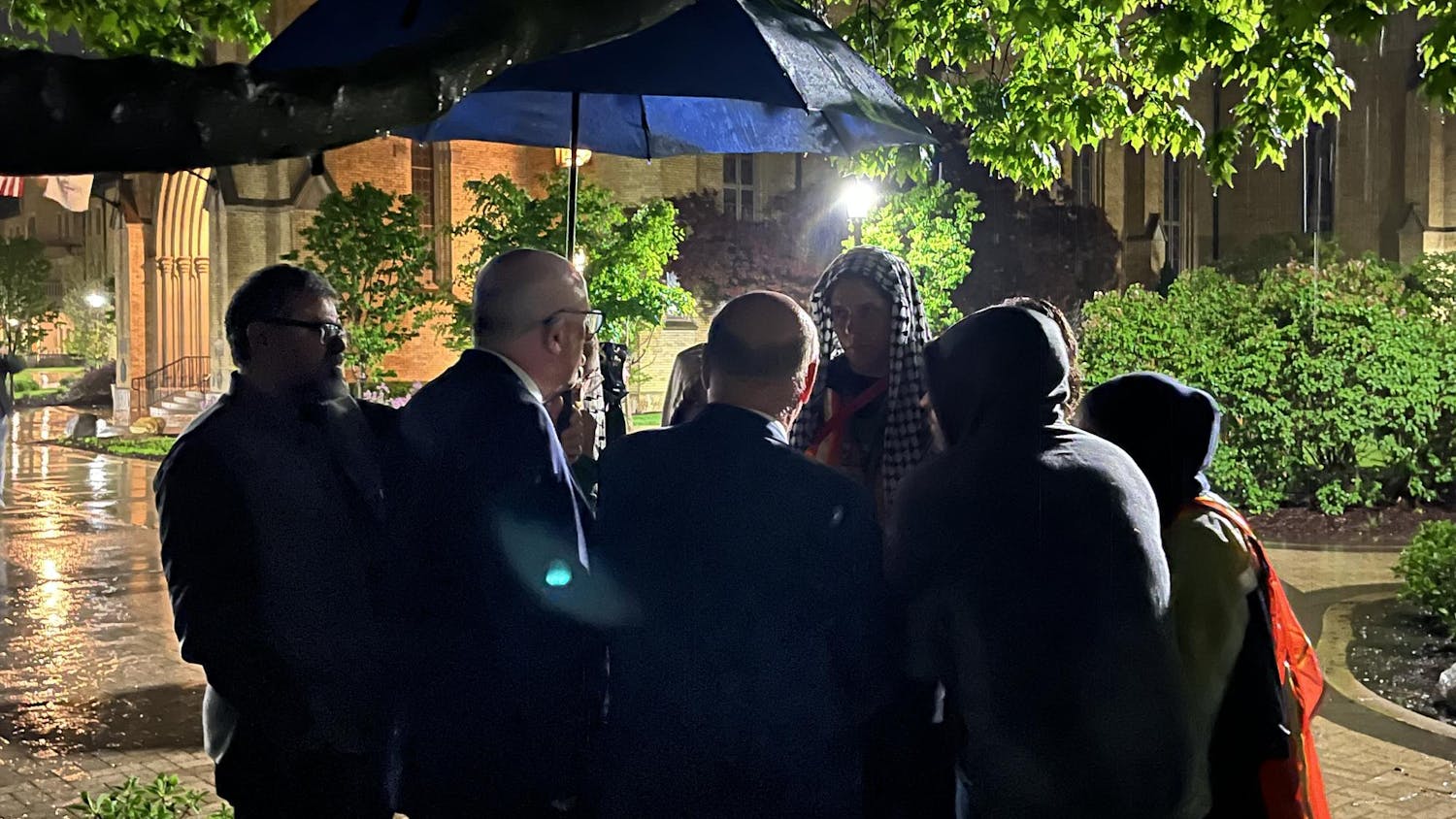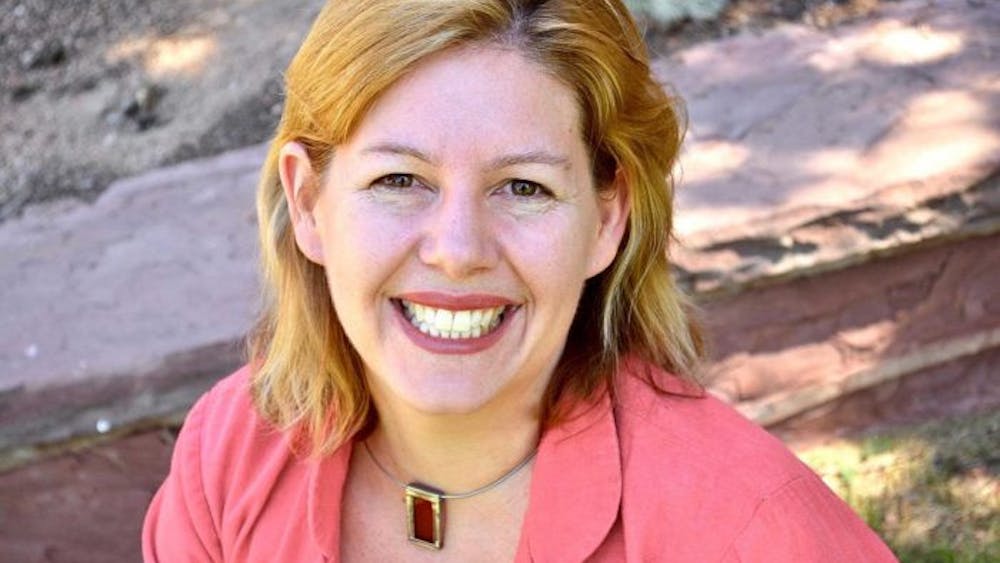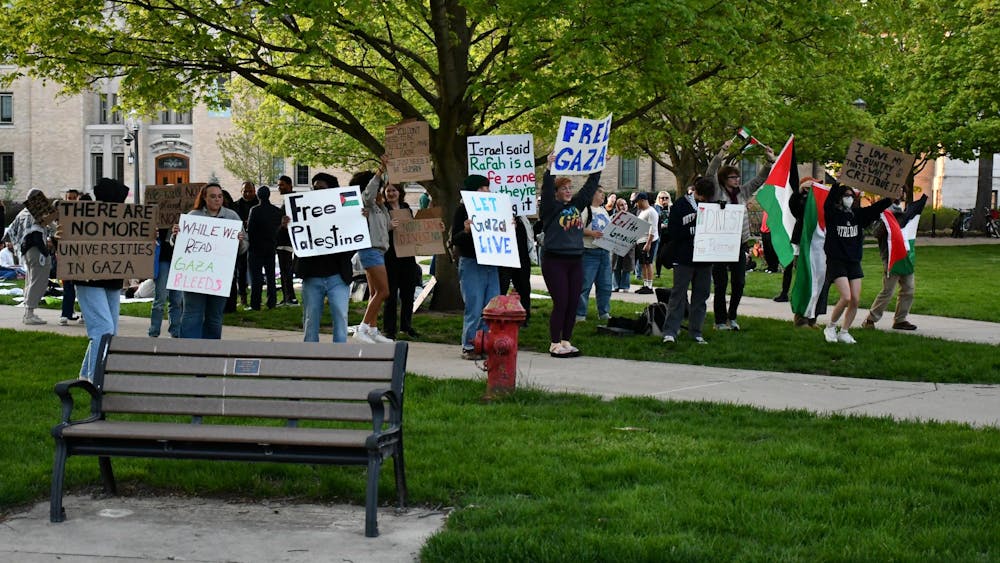The Sacred Heart of Jesus statue is one of the most iconic, symbolic but also controversial pieces of public art on Notre Dame’s campus. The Sacred Heart of Jesus sits right in front of the Main Building on God Quad, and if one looks at the statue directly, one can see the Basilica of the Sacred Heart is to the right and Washington Hall is to the left. The Sacred Heart of Jesus was sculpted by Robert Cassiani, and it was dedicated to the University during the 1893 commencement exercises. Cassiani modeled this statue after the statue of the Sacred Heart created by Gabriel Thomas that stood in Paris’ Montmartre Basilica until 1900 hoping to recreate its impact.
The statue of the Sacred Heart of Jesus portrays what is implied in its name: Jesus Christ with the sacred heart ablaze and visible through his chest. The sacred heart is one of the most revered symbols in Roman Catholicism, and it specifically represents Christ’s love for mankind through his sacrifice on the cross for human sin. Christ’s suffering is portrayed in the sacred heart with a knife going through it and a crown of thorns surrounding it. Despite this agony he had to endure, Christ’s love for humanity shines even brighter and outweighs the evil brought against it, which is represented with the sacred heart remaining “ablaze” through the pain. Notre Dame and the Congregation of the Holy Cross wanted to use the sacred heart in the statue to represent this same love but in an interactive way. The sacred heart could be seen as two sides, with one side representing God’s traditional love for humanity but the other side representing humanity’s love for God. The Congregation of the Holy Cross created this duality in the sacred heart because they saw it as a clear means for forming Notre Dame’s culture. They envisioned the Notre Dame family to be revered by God through the good works that its people engaged in, but they also envisioned the Notre Dame family revering God by making a positive impact in His name. The Sacred Heart of Jesus brings this two-sided love together in its portrayal at the “heart” of the campus, where the most notable Notre Dame landmarks surround it. This is to say that the University revolves around the sacred heart, utilizing its love to power its mission.
The other notable piece of the Sacred Heart of Jesus statue is the outstretching of Christ’s arms. The statue was designed so both of Christ’s arms were extended widely towards Our Lady on top of the Golden Dome of the Main Building. Taking this into account, it may seem that the more obvious representation of this gesture is to display Christ’s love towards Mary, his mother, as well as her university. However, the meaning goes much deeper, where controversy ensues. On the base of the statue there is an inscription, which reads “Venite Ad Me Omnes.” In Latin, this means “come to me all,” and now it is evident why Christ’s arms are extended towards the Golden Dome. This is Notre Dame’s way of saying everyone is welcome in its community, and all members of the Notre Dame family are meant to be respected and revered for who they are regardless of their background. This is the reason why we often see a picture of the statue next to the University’s Spirit of Inclusion, which details its commitment to diversity and acceptance among Notre Dame’s students. The University has Jesus’ “open arms” to all students and members of the Notre Dame family.
However, many members of the Notre Dame family unfortunately do not feel the same way.
Instead, they see the statue as a sign of hypocrisy.
The demographics of the University do not seem to foster the commitment towards diversity and inclusion at first glance, since the University is about 70% white, with the largest minority group being Latinos at a mere 11%. The question is, if the University truly cared about diversity and inclusion among its members, wouldn’t its students and faculty be much more diverse, too? Wouldn’t more people be “welcome” here by Christ’s extended arms? One may be left to question whether the statue is genuine or artificial, but its presence in front of the largest administrative building on campus can end the question. Hopefully, the Sacred Heart of Jesus will remind everyone who walks past it what Notre Dame’s mission is meant to be.
Estefan Linares is a junior business technology and Latino studies major, and can be reached at elinares@nd.edu
The Diversity Council of Notre Dame advocates for awareness, understanding and acceptance on issues of race, gender, sexual orientation, socioeconomic status and other intersectional identities in the Notre Dame community. The viewpoints expressed in this article do not necessarily reflect the opinion of the Diversity Council, but are the individual opinions of the author. You can contact Diversity Council at diversnd@nd.edu













